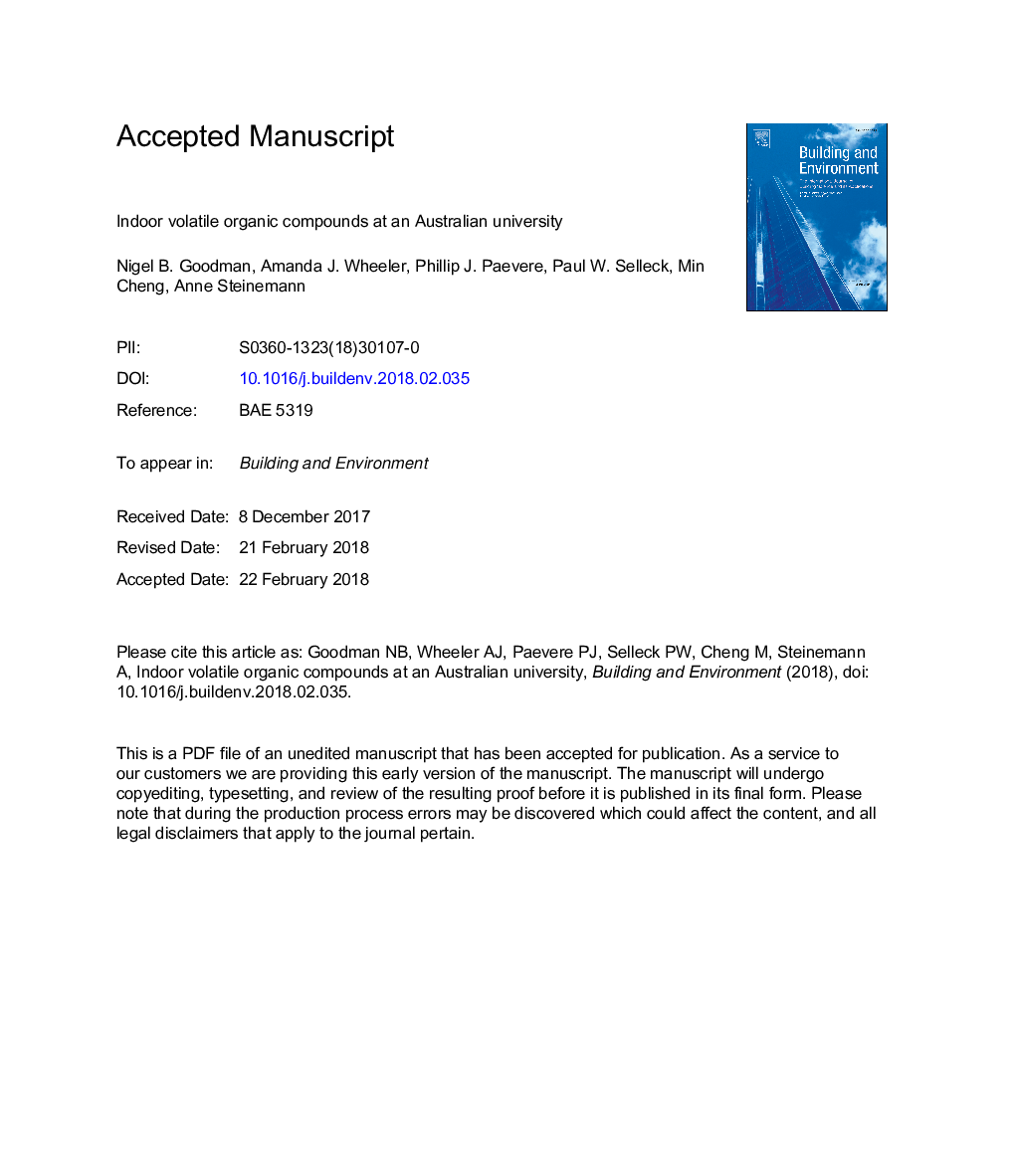| Article ID | Journal | Published Year | Pages | File Type |
|---|---|---|---|---|
| 6697731 | Building and Environment | 2018 | 32 Pages |
Abstract
This study investigates volatile organic compounds (VOCs) at a large Australian university, within locations of campus services, restrooms, renovated offices, a green building, meeting areas, and classrooms. Analysis of 41 VOCs across 20 locations reveals indoor concentrations higher than outdoor concentrations for 97% of all VOC measurements (493 unique comparisons). Hazardous air pollutants (formaldehyde, benzene, toluene, and xylenes) were up to an order of magnitude higher indoors than outdoors, and at the highest combined geometric mean concentrations in classrooms (51.6â¯Î¼g/m3), renovated offices (42.8â¯Î¼g/m3), and a green building (23.0â¯Î¼g/m3). Further, d-limonene, ethanol, hexaldehyde, β-pinene, and isobutane were up to two orders of magnitude higher indoors than outdoors. The most prevalent VOCs (e.g., ethanol, d-limonene, and formaldehyde) have links with building materials, furnishings, and fragranced consumer products such as air fresheners and cleaning supplies. Highest indoor to outdoor concentration (I/O) ratios of formaldehyde (27), toluene (9), p-xylene (12), and m-xylene (11) were in a green building; highest of benzene (6) in renovated offices; and highest of o-xylene (9) in meeting areas. Results from this study are consistent with findings from similar international studies and suggest that university indoor environments may be important sources of pollutants.
Related Topics
Physical Sciences and Engineering
Energy
Renewable Energy, Sustainability and the Environment
Authors
Nigel B. Goodman, Amanda J. Wheeler, Phillip J. Paevere, Paul W. Selleck, Min Cheng, Anne Steinemann,
